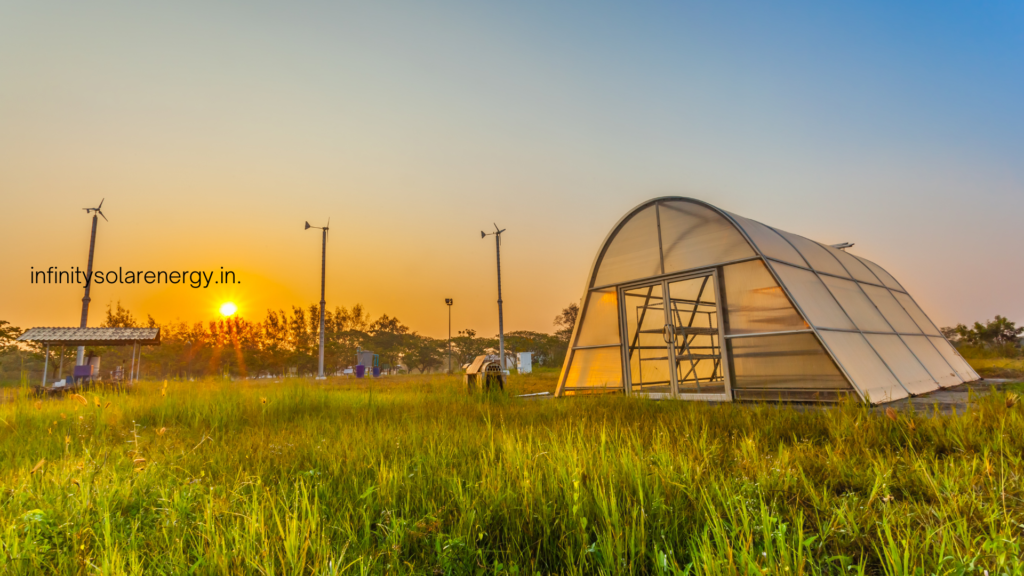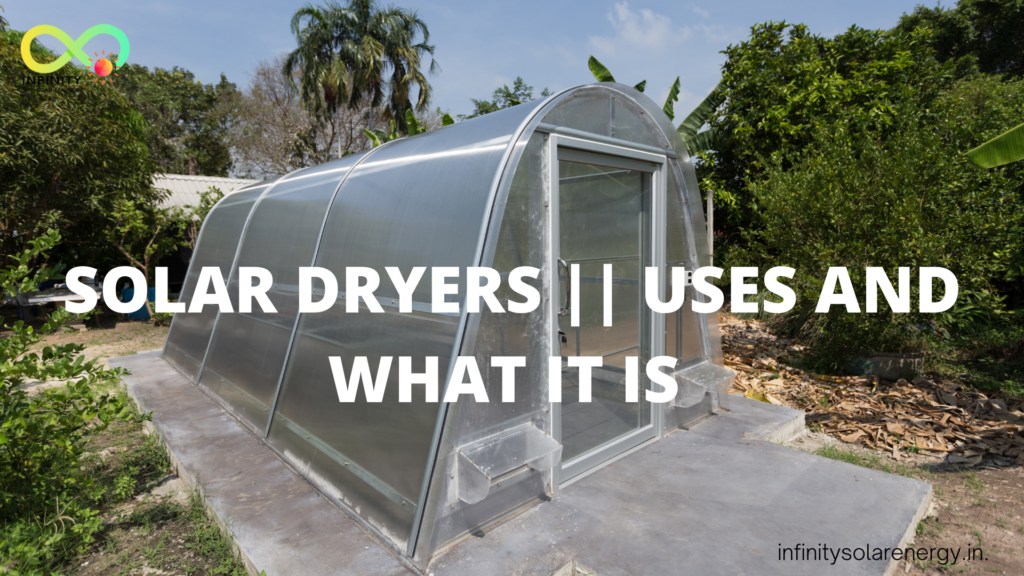What is a solar dryer?
A solar dryer is a solar device with an evaporator, a circulating fan, and a solar panel as its essential parts. The primary role of a solar dryer is to dry food in the shade during the daytime and release the heat of the drying surface to air when the sun goes down. Solar dryers have been designed and developed for a variety of uses. These devices are beneficial when dryers need to be outside or in areas with sizeable solar radiation.
The dryer has been designed so that it works on solar energy, which is free and inexpensive. For example, solar dryers can be used at home or on the farm. They can also be used on farms in developing countries where there is no electricity supply.
The benefits of solar dryers.
It is cost-effective. The product can be used year after year without having to use electrical appliances. It does not emit any polluting emissions. Easy to use and maintain, especially if there are not any difficult to remove components. It uses less electricity. It has low maintenance requirements—no expensive and bulky electrical gadgets. Problems of solar dryers While solar dryers are cost-effective, they can be dangerous.
The heat from solar dryers can result in burns, injury, or even death. The intense heat can burn dryers or electric items if the object or object being dried are not dry. When to use solar dryers can be used indoors or outdoors. To dry food products that do not require air circulation and heat.
Why should I use a solar dryer?

There are two types of solar dryers: Direct and indirect. You can use a direct solar dryer, for example, to dry up fruits, vegetables, and cut grass. But if you want to dry hay or corn, you should use an indirect solar dryer. The PV module converts solar radiation into electricity. When the solar rays fall on the dryer, its surface gets heated up, the air inside the dryer is in circulation by a fan, so the air which passes over the surface of the dryer gets heated due to convection. You can hang a solar dryer on the wall or roof and put food inside it to dry them efficiently.
It is environment-friendly: it is safe and convenient for use, and you do not need any power supply. You can use it for a very long time.
How do they work?
Both direct and indirect solar dryers have multiple layers. Direct solar dryers (like above) have a PV module, s roof-mounted fan, 1-2 infrared LED solar panels, and a 2-layer high-quality glass plate, which protects the dryer from sunlight. Indirect solar dryers (like below) have PV modules, roof-mounted solar panels, and a solar water heater on the ground, which works as a heat exchanger to capture the solar energy from the water heater.
The PV module transfers energy from the PV panel directly to the drying device through a small solar panel installed on top of it. The PV module transfers electricity from the solar energy into the energy storage tank (rechargeable battery). It is convenient to store and charge the battery.
Solar drying in practice.
Solar dryer components: Pin-hole photovoltaic modules Fan For each solar dryer, the solar cells are installed in the PV module, and a fan is mounted at the back. This solar dryer can be installed on a balcony, veranda, rooftop, etc. With suitable solar tracking, it is possible to cover a 1×1 meter (1×1 yard) area with solar dryers.
The material which is to be dried is first prepared in the production line and packed. After passing inspection, the package is sent to the customer and sold. The average cost of air conditioning and other energy-saving devices is increasing day by day.
Conclusion
The Solar Water Heater is a very efficient device for treating warm water efficiently. It has various advantages such as low operating temperature, relatively low cost, and low maintenance. The product is reliable, portable, and easy to install. It is easy to read and adjust. There is no need to wait for your pot to reach the desired temperature before you pour it.

